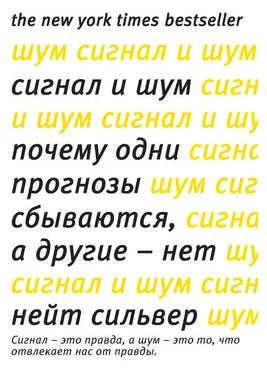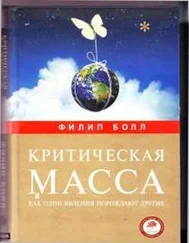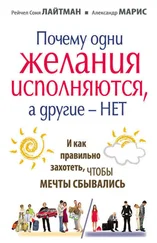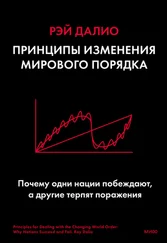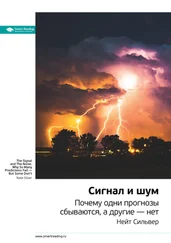«Hurricane Katrina Timeline», The Brookings Institution. http://www.brookings.edu/fp/projects/homeland/katrinatimeline.pdf.
Douglas Brinkley, «How New Orleans Drowned», Vanity Fair , June 2006. http://www.vanityfair.com/politics/features/2006/06/brinkley_excerpt200606.
Keith Elder, et al., «African Americans’ Decisions Not to Evacuate New Orleans Before Hurricane Katrina: A Qualitative Study», American Journal of Public Health 97, supplement 1 (April 2007). http://www.ncbi.nlm.nih.gov/pmc/articles/PMC1854973/.
H. Gladwin and W. G. Peacock, «Warning and Evacuation: A Night for Hard Houses», in Hurricane Andrew: Ethnicity, Gender, and the Sociology of Disasters (Oxford, England: Rout-ledge, 1997), pp. 52–74.
Brinkley, «How New Orleans Drowned».
«Hurricane Katrina Timeline», Brookings Institution.
«Houston Shelter Residents’ Reports of Evacuation Orders and Their Own Evacuation Experiences», in «Experiences of Hurricane Katrina Evacuees in Houston Shelters: Implications for Future Planning», by Mollyann Brodie, Erin Weltzien, Drew Altman, Robert J. Blendon and John M. Benson, American Journal of Public Health 9 , no. 8 (August2006): pp. 1402–1408. http://www.ncbi.nlm.nih.gov/pmc/articles/PMC1522113/table/t2/.
Amanda Ripley, The Unthinkable (New York: Random House, 2008). Kindle edition.
John Dollar, «The Man Who Predicted the Earthquake», Guardian , April 5, 2010. http://www.guardian.co.uk/world/2010/apr/05/laquila-earthquake-prediction-giampaolo-giuliani.
«Scientists in the Dock», Economist , September 17, 2011. http://www.economist.com/node/21529006.
Roger A. Pielke Jr., «Lessons of the L’Aquila Lawsuit», Bridges 31 (October 2011). http://sciencepolicy.colorado.edu/admin/publication_files/2011.36.pdf.
«Eyewitnesses: Italy Earthquake», BBC News, April 6, 2009. http://news.bbc.co.uk/2/hi/europe/7985248.stm.
Michael Taylor, «L’Aquila, Guiliani, and the Price of Earthquake Prediction», The Pattern Connection, July 7, 2010. http://patternizer.wordpress.com/2010/07/07/laquila-guiliani-and-the-price-of-earthquake-prediction/.
John Bingham, «L’Aquila Dogged by Earthquakes Through 800 Year History», Telegraph , April 6, 2009. http://www.telegraph.co.uk/news/worldnews/europe/italy/5113215/LAquila-dogged-by-earthquakes-through-800-year-history.html.
M. Stucchi, C. Meletti, A. Ravida, V. D’Amio, and A. Capera, «Historical Earthquakes and Seismic Hazard of the L’Aquila Area», Progettazione Sismica 1, no. 3 (2010): pp. 23–24.
Elisabeth Malkin, «Once Built on a Lake, Mexico City Now Runs Dry», New York Times , March 16, 2006. http://www.nytimes.com/2006/03/16/world/americas/16iht-mexico.html.
Nicola Nosengo, «Italian Earthquake Toll Highlights Poor Preparedness», Nature news blog, May 22, 2012. http://blogs.nature.com/news/2012/05/italian-earthquake-toll-highlights-poor-preparedness.html.
«Così Posso Prevedere I Terremoti In Abruzzo Ci Sono 5 Apparecchi», La Repubblica , April 6, 2009. Translated into English using Google Translate. http://www.repubblica.it/2009/04/sezioni/cronaca/terremoto-nord-roma/giulianigiampaolo/giulianigiampaolo.html.
Symon Hill, «Earthquakes and Bad Theology», Symon Hill’s Blog, Ekklesia, January 17, 2010. http://www.ekklesia.co.uk/node/11032.
William Pike, «The Haiti and Lisbon Earthquakes: ‘Why, God?» Encyclopedia Britannica blog, January 19, 2010. http://www.britannica.com/blogs/2010/01/the-haiti-and-lisbon-earthquakes-why-god/.
Rick Brainard, «The 1755 Lisbon Earthquake», 18th Century History , 2005. http://www.history1700s.com/articles/article1072.shtml.
Susan Hough, «Confusing Patterns with Coincidences», New York Times , April 11, 2009. http://www.nytimes.com/2009/04/12/opinion/12hough.html.
John Roach, «Can the Moon Cause Earthquakes?» National Geographic News, May 23, 2005. http://news.nationalgeographic.com/news/2005/05/0523_050523_moonquake.html.
Начиная с 1900 г., десять самых смертоносных землетрясений по всему миру погубило примерно 1,6 млн человек, а ураганы – 1,2 млн человек. Matt Rosenberg, «Top 10 Deadliest World Hurricanes Since 1900», About.com. http://geography.about.com/od/physicalgeography/a/deadlyhurricane.htm; «Earthquakes with 1,000 or More Deaths Since 1900», United States Geological Service. ссылка).
В данном случае я говорю о восприятии, а не о реальности. В буквальном смысле слова землетрясения происходят значительно чаще, чем ураганы. Каждый год на планете возникает лишь несколько десятков ураганов, а землетрясений – несколько миллионов. Однако в основной массе они достаточно незначительны и не всегда улавливаются без сейсмометра, а ураганы всегда получают свою долю внимания в выпусках новостей.
«Legends of Unusual Phenomena Before Earthquakes – Wisdom or Superstition?» in Earthquakes and Animals – From Folk Legends to Science (Hackensack, NJ: World Scientific Publishing, 2005). http://www.worldscibooks.com/etextbook/5382/5382_chap01.pdf.
Например, работа Джулиани получила довольно положительную рецензию в крупной британской газете Guardian . Dollar, «The Man Who Predicted the Earthquake».
Ed Wilson, Don Drysdale, and Carrie Reinsimar, «CEPEC Keeps Eye on Earthquake Predictions», State of California Department of Conservation, October 23, 2009. http://www.consrv.ca.gov/index/news/Pages/CEPECKeepsEyeOnEarthquakePredictions.aspx.
R. A. Grant and T. Halliday, «Predicting the Unpredictable: Evidence of Pre-Seismic Anticipatory Behaviour in the Common Toad», Journal of Zoology 700 (January 25, 2010). http://image.guardian.co.uk/sys-files/Environment/documents/2010/03/30/toads.pdf.
Одна очевидная проблема этой работы состоит в том, что поведение жаб куда лучше соотносилось по времени с незначительными толчками в Л’Акуиле, а не с основным землетрясением. Иными словами, если жабы были действительно настолько чувствительны к землетрясениям, то можно предположить, что они скорее реагировали на уже происходившие небольшие толчки, а не «предсказывали» основное землетрясение. Разумеется, улавливать и предварительные толчки, и основное землетрясение вполне под силу и обычным сейсмометрам.
Читать дальше
Конец ознакомительного отрывка
Купить книгу
